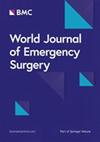The ground is the limit: epidemiology of skydiving accidents over 25 years and in 2.1 million jumps in the Netherlands with sub-analysis of injuries reported by medical professionals in the past five years
IF 6
1区 医学
Q1 EMERGENCY MEDICINE
引用次数: 0
Abstract
Skydiving is the fastest nonmotorized sport; and consequently is not without risk. In the last decades, skydiving has become considerably safer but injuries and fatalities still occur. Incidents are reported to and administered by the Royal Netherlands Aeronautical Association (KNVvL). From 1995 to 2020, 2715 incidents were reported; of which 1503 resulted in injury and 26 in fatality. There is a need for more information available on the particular type, severity, and factors which contribute to skydiving-related injuries worldwide. This study aims to investigate patterns in occurrence rates, examine demographic and skydiving-related factors linked to injuries, and analyze the types and severity of injuries relating to these contributing factors. The Dutch KNVvL database – covering more than 25 years of data – was examined for contributing factors. An analysis of the severity and types of injury resulting from incidents over the last five years were matched with a search of hospital databases. The rate of injuries pattern increases starting from 2016, with novice jumpers having the highest risk of injury. Most injuries occur during the landing phase. The lower extremities and the spine are most affected, with fractures being the most prevalent type of injury. More than half of the patients were admitted to hospital, with 10% requiring surgery, resulting in months of rehabilitation. This study is the first in the Netherlands, and only the second worldwide to analyze technical incident databases in combination with data from medical information systems. Skydiving accidents of experienced jumpers should be considered as ‘high-energy trauma,’ therefore treatment should follow standard trauma guidelines. In less experienced skydivers, it is critical to conduct a secondary survey to assess the extremities adequately. Clinicians should also pay attention to friction burns that can arise due to friction between the skin and skydive equipment, a phenomenom that is already known in road traffic accidents.地面是极限:荷兰 25 年间 210 万次跳伞事故的流行病学,以及对过去五年医疗专业人员报告的伤害进行的次级分析
跳伞是速度最快的非机动运动,因此并非没有风险。在过去的几十年里,跳伞运动已经变得相当安全,但伤亡事故仍时有发生。事故报告由荷兰皇家航空协会(KNVvL)负责。从 1995 年到 2020 年,共报告了 2715 起事故;其中 1503 起导致受伤,26 起导致死亡。有必要提供更多有关全球跳伞相关伤害的具体类型、严重程度和因素的信息。本研究旨在调查事故发生率的模式,研究与伤害有关的人口和跳伞相关因素,并分析与这些因素有关的伤害类型和严重程度。研究人员对荷兰 KNVvL 数据库(涵盖超过 25 年的数据)中的诱因进行了研究。通过搜索医院数据库,对过去五年中事故造成的伤害的严重程度和类型进行了分析。从 2016 年开始,受伤率呈上升趋势,跳伞新手的受伤风险最高。大多数伤害发生在着陆阶段。下肢和脊柱受到的影响最大,骨折是最常见的受伤类型。半数以上的患者需要住院治疗,其中 10%的患者需要进行手术,因此需要数月的康复治疗。这项研究是荷兰的第一项研究,也是全球第二项结合医疗信息系统数据分析技术事故数据库的研究。经验丰富的跳伞者发生的跳伞事故应被视为 "高能量创伤",因此治疗应遵循标准创伤指南。对于经验较少的跳伞者,进行二次调查以充分评估四肢情况至关重要。临床医生还应注意皮肤与跳伞设备之间的摩擦可能导致的摩擦灼伤,这种现象在道路交通事故中早已有之。
本文章由计算机程序翻译,如有差异,请以英文原文为准。
求助全文
约1分钟内获得全文
求助全文
来源期刊

World Journal of Emergency Surgery
EMERGENCY MEDICINE-SURGERY
CiteScore
14.50
自引率
5.00%
发文量
60
审稿时长
10 weeks
期刊介绍:
The World Journal of Emergency Surgery is an open access, peer-reviewed journal covering all facets of clinical and basic research in traumatic and non-traumatic emergency surgery and related fields. Topics include emergency surgery, acute care surgery, trauma surgery, intensive care, trauma management, and resuscitation, among others.
 求助内容:
求助内容: 应助结果提醒方式:
应助结果提醒方式:


